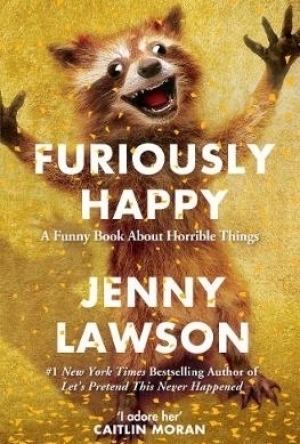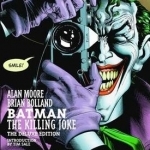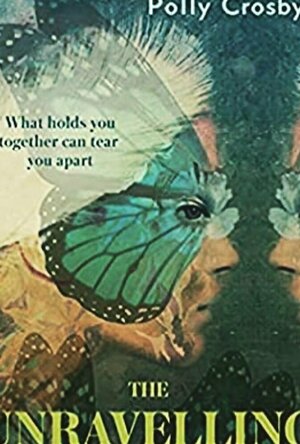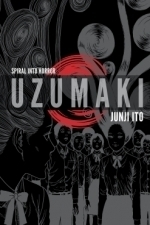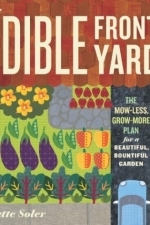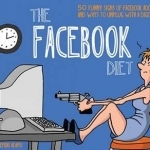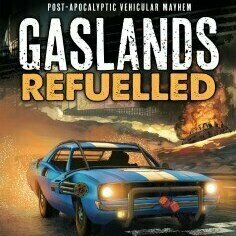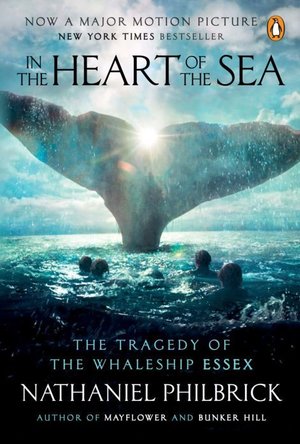Search
Search results
Sam (74 KP) rated Furiously Happy in Books
Mar 27, 2019
I love reading books on mental health, with some of my favourites being Matt Haig’s Reasons To Stay Alive and Notes on a Nervous Planet, however Matt Haig’s stance is very serious. This is the complete opposite to that – it takes mental illness and turns it into something laughable and relatable.
And the relatableness was the reason that I enjoyed this so much. Lawson makes references to A Series of Unfortunate Events which everyone knows is one of my absolute favourite series of books. She also loves cats, which is the way to my heart.
Just before reading this, I had read Art Matters by Neil Gaiman, which is a collection of a few of his essays illustrated by Chris Riddell. Neil Gaiman talks about how he helped an author believe they could narrate their own audiobook by telling them to tell their self that they are a professional audio book narrator.
Seems unrelated? Well the weird thing is, in Furiously Happy, Lawson talks about when Neil Gaiman gave her some advice for narrating her own audiobook. This freaked me out a bit, especially since I had just picked up Furiously Happy on a whim.
Think of it as you like, but for me that was meant to be. It was proof that I was meant to find this book in a little charity shop.
Overall, I found the book to be a good giggle and I read it within a day. It’s definitely worth checking out if you are a fan of Matt Haig or if you just need a pick-me-up.
And the relatableness was the reason that I enjoyed this so much. Lawson makes references to A Series of Unfortunate Events which everyone knows is one of my absolute favourite series of books. She also loves cats, which is the way to my heart.
Just before reading this, I had read Art Matters by Neil Gaiman, which is a collection of a few of his essays illustrated by Chris Riddell. Neil Gaiman talks about how he helped an author believe they could narrate their own audiobook by telling them to tell their self that they are a professional audio book narrator.
Seems unrelated? Well the weird thing is, in Furiously Happy, Lawson talks about when Neil Gaiman gave her some advice for narrating her own audiobook. This freaked me out a bit, especially since I had just picked up Furiously Happy on a whim.
Think of it as you like, but for me that was meant to be. It was proof that I was meant to find this book in a little charity shop.
Overall, I found the book to be a good giggle and I read it within a day. It’s definitely worth checking out if you are a fan of Matt Haig or if you just need a pick-me-up.
Eleanor Luhar (47 KP) rated Batman the Killing Joke in Books
Jun 24, 2019
I went to London Super Comic Con on Friday and bought a few image books/graphic novels (I can't wait to read them!) and decided to start taking advantage of my boyfriend's extensive comic/graphic novel collection. As I've been intending to read The Killing Joke for ages now, I decided to start with that.
The edition I read included an introduction by Tim Sales, an afterword by Brian Bolland, and a final scene written and illustrated by Bolland.
This is one of the most famous and successful novels - and I can see why. The story is just fantastic - the Joker tries to prove that anyone can go insane after just one bad day, using Jim Gordon as his example. The colour palettes are so cleverly thought out, giving an eerie, creepy tone to most scenes, while the Joker's (possible) origin story is mostly black and white with just small details in red.
Batman is obviously included, but is not a massive character in this story. The focus is on the Gordons and the Joker.
I really loved this. The origin story for the Joker that's included can be taken as true or false - the Joker makes a comment about not actually remembering his past, and liking it to be "multiple choice". This gives the reader the choice of believing it or not. And the Joker's ways of putting Jim Gordon through hell are definitely in line with his character.
The Joker always fascinates me, and I would love to read all his stories. But whether you're a "fan" of his or not, this book is definitely worth the read. 5 stars; an fantastic novel.
The edition I read included an introduction by Tim Sales, an afterword by Brian Bolland, and a final scene written and illustrated by Bolland.
This is one of the most famous and successful novels - and I can see why. The story is just fantastic - the Joker tries to prove that anyone can go insane after just one bad day, using Jim Gordon as his example. The colour palettes are so cleverly thought out, giving an eerie, creepy tone to most scenes, while the Joker's (possible) origin story is mostly black and white with just small details in red.
Batman is obviously included, but is not a massive character in this story. The focus is on the Gordons and the Joker.
I really loved this. The origin story for the Joker that's included can be taken as true or false - the Joker makes a comment about not actually remembering his past, and liking it to be "multiple choice". This gives the reader the choice of believing it or not. And the Joker's ways of putting Jim Gordon through hell are definitely in line with his character.
The Joker always fascinates me, and I would love to read all his stories. But whether you're a "fan" of his or not, this book is definitely worth the read. 5 stars; an fantastic novel.
ClareR (5879 KP) rated The Unravelling in Books
Feb 23, 2022
I absolutely adored this thoughtful, beautiful story of a young woman, Tartelin, going to live on the island of Dohhalund as an assistant to Marianne Stourbridge, and elderly lepidopterist.
Marianne is a difficult woman to get to know: she’s short tempered, doesn’t really want to share any of herself with Tartelin - and she has a lot of secrets to share.
Tartelin is mourning the death of her mother. She’s a young woman, alone in the world. She probably chooses the job with Marianne because it’s somewhere so different from her childhood home and her mother’s art studio.
I do think that Dohhalund goes some way to helping Tartelin begin the grieving process. It sounds like a stark, beautiful place. At one end is a military base, and at the other is Marianne’s house and land. Her family had lived on Dohhalund for generations, until the military had ordered them to leave. After her return, it’s evident that many of the buildings have started to fall into the sea. This reflects to some extent, Marianne’s physical and Tartelin’s mental states. Both women are deeply affected by what has happened in their pasts.
This is such an emotive, beautifully descriptive book. It’s a slow burner, a story of friendship and love, where secrets are revealed, people are reunited and new friendships forged.
This gorgeous book had me in tears by the end, with characters I really cared for. As the Pearl Women in the book often said: “The sea is made up of unspeakable sadness”, and whilst this novel was sad, there was also hope.
Highly recommended (as is Polly Crosby’s first book “The Illustrated Child”).
Marianne is a difficult woman to get to know: she’s short tempered, doesn’t really want to share any of herself with Tartelin - and she has a lot of secrets to share.
Tartelin is mourning the death of her mother. She’s a young woman, alone in the world. She probably chooses the job with Marianne because it’s somewhere so different from her childhood home and her mother’s art studio.
I do think that Dohhalund goes some way to helping Tartelin begin the grieving process. It sounds like a stark, beautiful place. At one end is a military base, and at the other is Marianne’s house and land. Her family had lived on Dohhalund for generations, until the military had ordered them to leave. After her return, it’s evident that many of the buildings have started to fall into the sea. This reflects to some extent, Marianne’s physical and Tartelin’s mental states. Both women are deeply affected by what has happened in their pasts.
This is such an emotive, beautifully descriptive book. It’s a slow burner, a story of friendship and love, where secrets are revealed, people are reunited and new friendships forged.
This gorgeous book had me in tears by the end, with characters I really cared for. As the Pearl Women in the book often said: “The sea is made up of unspeakable sadness”, and whilst this novel was sad, there was also hope.
Highly recommended (as is Polly Crosby’s first book “The Illustrated Child”).
Jamie (131 KP) rated Uzumaki (3-in-1, Deluxe Edition): Includes Vols. 1, 2 & 3: Vols. 1, 2 & 3 in Books
Jun 4, 2017
Nightmare fuel in it’s purest form
Spirals exist everywhere in nature: in the shells of snails, the petals of a flower, the swirling clouds of a hurricane, even the shape of whole galaxies. Why this shape continues to show up over and over again in nature is still a bit of a mystery. For the most part spirals are viewed as aesthetically pleasing, appealing to humanity throughout the centuries.
What makes Uzumaki so brilliant is that it takes something so abstract and transforms it into pure nightmare fuel, utterly corrupting one of nature's most beautiful shapes: the spiral. When I had first started reading this comic I was skeptical, how could a geometic shape be scary? There is nothing inherently sinister about a shape, just as there is nothing all that unusual about the town.
Uzumaki challenged my perception of horror in it’s twisting narrative, starting slow as the madness began to spread, spiraling out like a flower in bloom. As the story reached a fever pitch, it quickly descends, like a whirlpool sucking everything underneath it’s surface. Pure genius.
The art is also a wonder in itself, with extremely detailed drawings depicting some of the best examples of body horror that I’ve ever seen. While this is of course up for debate, many fans and critics have chosen Uzumaki as Ito’s magnum opus, and after reading a couple of his other comics I would have to agree. Uzumaki is one of the best works of horror I’ve ever had the pleasure of reading. I highly recommend this for any fan of horror, but especially for fans of the works of H.P. Lovecraft, whose books greatly influenced Ito in his creation of the series.
What makes Uzumaki so brilliant is that it takes something so abstract and transforms it into pure nightmare fuel, utterly corrupting one of nature's most beautiful shapes: the spiral. When I had first started reading this comic I was skeptical, how could a geometic shape be scary? There is nothing inherently sinister about a shape, just as there is nothing all that unusual about the town.
Uzumaki challenged my perception of horror in it’s twisting narrative, starting slow as the madness began to spread, spiraling out like a flower in bloom. As the story reached a fever pitch, it quickly descends, like a whirlpool sucking everything underneath it’s surface. Pure genius.
The art is also a wonder in itself, with extremely detailed drawings depicting some of the best examples of body horror that I’ve ever seen. While this is of course up for debate, many fans and critics have chosen Uzumaki as Ito’s magnum opus, and after reading a couple of his other comics I would have to agree. Uzumaki is one of the best works of horror I’ve ever had the pleasure of reading. I highly recommend this for any fan of horror, but especially for fans of the works of H.P. Lovecraft, whose books greatly influenced Ito in his creation of the series.
Goddess in the Stacks (553 KP) rated The Edible Front Yard in Books
Sep 8, 2017
A gorgeous book about growing edibles while maintaining a beautiful appearance
I would definitely give this book the full five stars. It’s filled with gorgeous, full-color, glossy photographs that really show off the concepts illustrated in the book. Soler describes both some common vegetables (corn and beans, for example) as well as some things I didn’t even know were edible, like daylilies and nasturtiums! She includes a lot of unusual edibles, like artichokes and bananas, the latter of which I can’t grow outside here in Maryland. She lives in LA, though, and I completely understand how it must be complicated to write a book applicable to the entire United States!
Her chapters range from “Curb Appeal” – WHY should we care what our yard looks like, and what actually looks good? – to “The New Front Yard Plant Palette” which is all about classic edibles that also look great. Another chapter is about helper plants – plants that aren’t necessarily edible (though some of them are), but that serve other purposes in the garden, such as pest repellant or predatory bug attractants. Both of these chapters list a TON of plants, with short descriptions about why they’re on the list, how to take care of them, and what to use them for. EXTREMELY useful.
Soler has her own blog – The Germinatrix – but unfortunately it doesn’t look like it’s been updated since 2012. Her Twitter seems to have died about the same time, and her Facebook hasn’t seen a post since early 2013. I’m still hoping to find her presence online, as I love her writing style and would love to find more of her work.
You can find all my reviews at http://goddessinthestacks.wordpress.com
Her chapters range from “Curb Appeal” – WHY should we care what our yard looks like, and what actually looks good? – to “The New Front Yard Plant Palette” which is all about classic edibles that also look great. Another chapter is about helper plants – plants that aren’t necessarily edible (though some of them are), but that serve other purposes in the garden, such as pest repellant or predatory bug attractants. Both of these chapters list a TON of plants, with short descriptions about why they’re on the list, how to take care of them, and what to use them for. EXTREMELY useful.
Soler has her own blog – The Germinatrix – but unfortunately it doesn’t look like it’s been updated since 2012. Her Twitter seems to have died about the same time, and her Facebook hasn’t seen a post since early 2013. I’m still hoping to find her presence online, as I love her writing style and would love to find more of her work.
You can find all my reviews at http://goddessinthestacks.wordpress.com
Nicole Hadley (380 KP) rated Different? Same! in Books
Jun 18, 2018
Different? Same! by Heather Tekavec is a beautiful and playful animal book that seeks to engage young readers by pointing out differences between groupings of widely different animals and then asking what similarity exists. The similarity might be stripes, horns, whiskers or shells.
It is wonderfully written and beautifully illustrated. While the book is for young children (ages 2-5) I read it to my 5th and 6th grade students who enjoyed the book very much. It makes you consider animals in different ways and think about why these vastly different animals might all have horns, whiskers, shells, etc. We had fun with the last page of the book, pointing at various animals that all had a particular characteristic.
On each two-page spread, there are four animals. The animals each something about themselves or their habitat and each thing is different. Then we are told what they have in common or how they all the same, such as they have stripes or scales or tusks etc. I loved the science behind this but it is so much more than that. The message that no matter how different we all are, we are still all the same, we are human is a message that needs to be reiterated over and over. The illustrations are wonderful, so cute and playful. The vocabulary is descriptive, yet simple. the only complaint I have is that the animals are not named. It would be nice if they had been labeled so that children could ask questions and get further information. If they do not know what the animal is, that could prove to be difficult.
Thank you to Kids Can Press and NetGalley for this ARC. I received this book in exchange for an honest review.
It is wonderfully written and beautifully illustrated. While the book is for young children (ages 2-5) I read it to my 5th and 6th grade students who enjoyed the book very much. It makes you consider animals in different ways and think about why these vastly different animals might all have horns, whiskers, shells, etc. We had fun with the last page of the book, pointing at various animals that all had a particular characteristic.
On each two-page spread, there are four animals. The animals each something about themselves or their habitat and each thing is different. Then we are told what they have in common or how they all the same, such as they have stripes or scales or tusks etc. I loved the science behind this but it is so much more than that. The message that no matter how different we all are, we are still all the same, we are human is a message that needs to be reiterated over and over. The illustrations are wonderful, so cute and playful. The vocabulary is descriptive, yet simple. the only complaint I have is that the animals are not named. It would be nice if they had been labeled so that children could ask questions and get further information. If they do not know what the animal is, that could prove to be difficult.
Thank you to Kids Can Press and NetGalley for this ARC. I received this book in exchange for an honest review.
(This review can be found on my blog <a href="http://themisadventuresofatwentysomething.blogspot.com/">The (Mis)Adventures of a Twenty-Something Year Old Girl</a> at the beginning of December).
When I was asked if I would review this book, I said yes without even thinking about. This book has been on my to be read shelf for awhile, and while it wasn't laugh out loud funny all the time, it was still laugh worthy.
The cover shows that this is going to be a humorous book with funny illustrations. I, personally, like the cover, and it drew me in.
There is one sign that you're a Facebook addict on each page as well as a full page illustration on the other to go with the sign. Some of these are funny while others are mildly amusing. Some signs used in the book include "you've already created a page for your unborn child," your partner angrily claims they've become a Facebook widow," and "you've had a face-off with Facebook." There's also suggestions to detox from Facebook such as "get sent to jail," "join Google+ instead," and "fall in love."
I enjoyed the illustrations the most if I'm honest. Gemini Adams, not only wrote the book, but also illustrated it. While most of them are cutesy, there area few which are kinda crude. Mostly, they only show women's breasts. There's no illustrations of crotches so worry not.
I believe this book would be a perfect stocking stuffer or gag gift for someone who is on Facebook a lot. I'm thinking of getting this book for my dad who is obsessed with how many friends he has and how many likes he gets.
(I received a free paperback copy of this book from the publisher in exchange for a fair and honest review).
When I was asked if I would review this book, I said yes without even thinking about. This book has been on my to be read shelf for awhile, and while it wasn't laugh out loud funny all the time, it was still laugh worthy.
The cover shows that this is going to be a humorous book with funny illustrations. I, personally, like the cover, and it drew me in.
There is one sign that you're a Facebook addict on each page as well as a full page illustration on the other to go with the sign. Some of these are funny while others are mildly amusing. Some signs used in the book include "you've already created a page for your unborn child," your partner angrily claims they've become a Facebook widow," and "you've had a face-off with Facebook." There's also suggestions to detox from Facebook such as "get sent to jail," "join Google+ instead," and "fall in love."
I enjoyed the illustrations the most if I'm honest. Gemini Adams, not only wrote the book, but also illustrated it. While most of them are cutesy, there area few which are kinda crude. Mostly, they only show women's breasts. There's no illustrations of crotches so worry not.
I believe this book would be a perfect stocking stuffer or gag gift for someone who is on Facebook a lot. I'm thinking of getting this book for my dad who is obsessed with how many friends he has and how many likes he gets.
(I received a free paperback copy of this book from the publisher in exchange for a fair and honest review).
Deborah (162 KP) rated Richard III in Books
Dec 21, 2018
Baldwin has written extensively about this period, so I had high expectations of his latest offering. The illustrations in this volume are great and the portrait of Richard is one which I don't believe I've seen before. The author also makes some sensible comments. So far so good, but I do feel that it doesn't go quite far enough. It's not a long book and a very easy read, but Baldwin seems a bit too keen to been seen as objective to commit himself as having too much of an opinion either way. Most of what is presented is done in a factual way and without a lot of analysis, I felt. Most of the evidence I felt was on the positive side, or at least not damning.
Beyond saying he thinks it unlikely that Richard has his nephews murdered (even his detractors agree that he was not stupid), he doesn't really go into this a lot, or examine Elizabeth Woodville's reasons for letting her daughters out of sanctuary or her later reaction to the Simnel rebellion. I know he has written separate volumes on both Elizabeth Woodville and Richard of York, the younger of her sons, but the issue is almost completely sidestepped here which is interesting, as this is really the question lying at the heart of The Great Debate.
So, my overall opinion was this this was very readable, fantastically illustrated and good, as far as it went. It would make a good introduction to the subject. Personally, I would have liked it to have gone a bit further. I couldn't help but compare it to Paul Murray Kendall's book. It's some time since I read it, but I was left with an enormous feel for the period and a sense of colour and life and I didn't quite get that from Baldwin.
Beyond saying he thinks it unlikely that Richard has his nephews murdered (even his detractors agree that he was not stupid), he doesn't really go into this a lot, or examine Elizabeth Woodville's reasons for letting her daughters out of sanctuary or her later reaction to the Simnel rebellion. I know he has written separate volumes on both Elizabeth Woodville and Richard of York, the younger of her sons, but the issue is almost completely sidestepped here which is interesting, as this is really the question lying at the heart of The Great Debate.
So, my overall opinion was this this was very readable, fantastically illustrated and good, as far as it went. It would make a good introduction to the subject. Personally, I would have liked it to have gone a bit further. I couldn't help but compare it to Paul Murray Kendall's book. It's some time since I read it, but I was left with an enormous feel for the period and a sense of colour and life and I didn't quite get that from Baldwin.
Russell Evans (179 KP) rated Gaslands Refuelled in Tabletop Games
Feb 23, 2020
Super cheap miniatures game (3 more)
Easy to get into
Fun rules
Unlimited modelling options
No official pre-made pre-painted miniatures (1 more)
Print off your own templates or buy from 3rd parties
A brilliantly written and illustrated book for a tabletop game of post-apocalyptic racing – fast cars with big guns – Mad Max in miniature.
It’s tons of fun and easy to play the basics straight away. After that, there is more depth to the rules to explore and building teams to keep things interesting and have long term playability. To get started, you can use templates copied and printed from the book and normal dice, or like I have done, you can get plenty of third-party companies selling templates, scenery and ‘skid’ dice.
One of the main reasons I picked this game up, apart from the raving reviews I’d seen online, was the DIY modelling aspect of the game. As a long time mini-gamer of things like Warhammer and Star Wars FFG, I’m used to my miniatures burning a big hole in my pocket. Re-modelling and repainting HotWheels cars (Super cheap – a couple of quid vs about £30 for a Star Wars ship) is the best part of this game for me, you can use standard cars if you want to, but there are no official pre-made pre-painted ‘cars’ which may be a negative, if you’re not into modelling.
Fun is the main priority and my favourite rule is that if a rule is unclear, you choose whichever option results in the most carnage for all concerned … This is ‘The Rule of Carnage’.
Highly recommended – if you want a different mini game that’s fun and won’t break the bank, check this out!
It’s tons of fun and easy to play the basics straight away. After that, there is more depth to the rules to explore and building teams to keep things interesting and have long term playability. To get started, you can use templates copied and printed from the book and normal dice, or like I have done, you can get plenty of third-party companies selling templates, scenery and ‘skid’ dice.
One of the main reasons I picked this game up, apart from the raving reviews I’d seen online, was the DIY modelling aspect of the game. As a long time mini-gamer of things like Warhammer and Star Wars FFG, I’m used to my miniatures burning a big hole in my pocket. Re-modelling and repainting HotWheels cars (Super cheap – a couple of quid vs about £30 for a Star Wars ship) is the best part of this game for me, you can use standard cars if you want to, but there are no official pre-made pre-painted ‘cars’ which may be a negative, if you’re not into modelling.
Fun is the main priority and my favourite rule is that if a rule is unclear, you choose whichever option results in the most carnage for all concerned … This is ‘The Rule of Carnage’.
Highly recommended – if you want a different mini game that’s fun and won’t break the bank, check this out!
